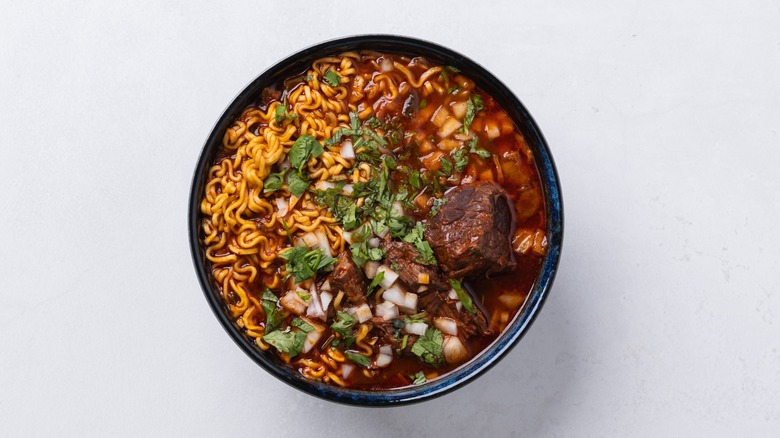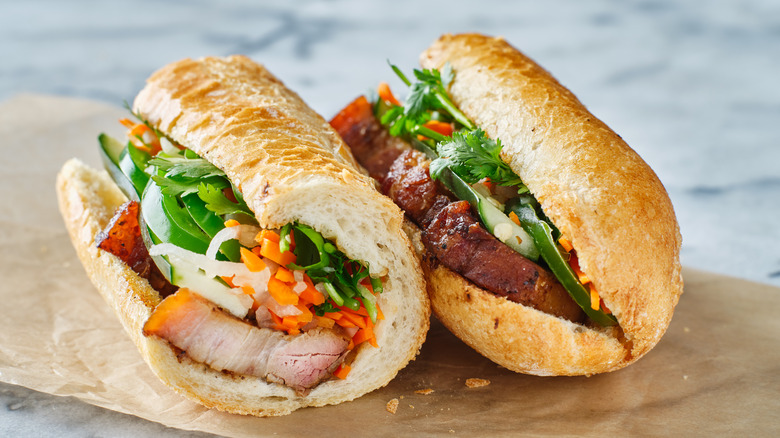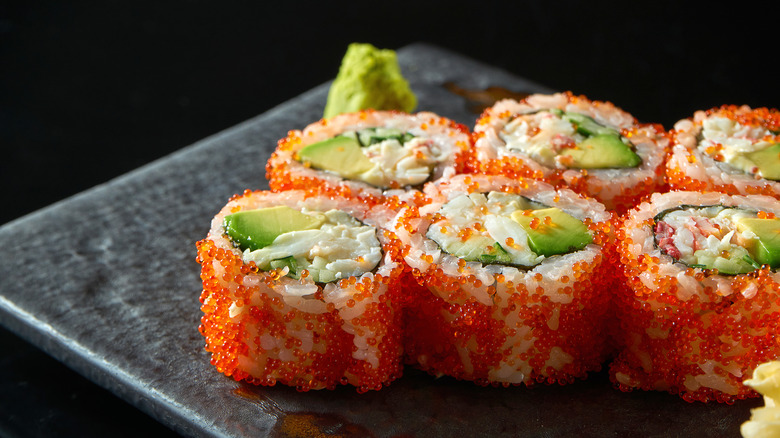What Actually Defines Fusion Cuisine?
If you've spent any amount of time on foodie social media, there is an approximately 100% chance you've seen a post about birria ramen. The mashup of Mexican birria and Japanese ramen has been one of the trendiest dishes of the early 2020s, and it's a textbook example of what people refer to as fusion food: Food that combines ingredients, techniques, and culinary traditions from two or more cultures. However, this broad definition isn't very good, and the term "fusion food" has much broader implications than most people consider.
The trouble is, if you define fusion food as the combination of multicultural cuisines, almost everything we eat could be classified as such. No matter where we come from, our food has been shaped by centuries of international trade, colonialism, and immigration. The term "fusion" in cooking is new, coined by American chef Norman Van Aken in the 1980s, but the idea is as old as trade and travel. To illustrate the challenge of defining fusion food, take another look at birria ramen.
Most people would immediately identify birria ramen as fusion cuisine — what fewer people would recognize is that both birria and ramen are, on their own, fusion foods. Birria was born when Spanish colonizers introduced goats to native Mexicans, and ramen originated when Japan took over portions of China and assimilated noodles into its cuisine. Some restaurants market themselves on specific cultural fusions, like chef Roy Choi's Korean taco truck Kogi, but others serve fusion dishes without realizing it.
A brief history of fusion food
Fusion food feels modern because nobody talked about it until the late 1980s. Chef Norman Van Aken worked in Key West, Florida, where he saw restaurants combining Caribbean and European influences. That same decade, Wolfgang Puck opened Chinois on Main, combining his French culinary training with ingredients he discovered through Southern California's East Asian community. Chinois on Main is sometimes credited with launching fusion cuisine, but neither Puck nor Van Aken can genuinely claim its invention.
Hybridized foods emerge throughout history whenever multiple cultures interact. Italian spaghetti evolved from Chinese noodles, and there was no Pomodoro sauce until European colonizers found tomatoes in the Americas. Colonialism has been perhaps the biggest driving factor in developing fusion dishes. Consider Vietnam's famous bánh mì sandwich. Its characteristic elements of pâté, mayonnaise, and baguette are all rooted in French food.
When chefs like Puck began blending European and Asian culinary influences, they merely built upon the ingenuity of generations of cooks. However, they did so with clearer intent, making modern fusion restaurants distinct. Birria, ramen, spaghetti, and bánh mì are all fusion foods born from necessity or opportunity, while a dish like birria ramen or a sushi burrito is the result of a chef pinpointing two complete dishes from different cultures and mixing their elements. That level of intent and the cook's own acknowledgment of multiethnic inspirations may be the best definer of the modern fusion restaurant scene.
Iconic fusion foods to try
The only way to understand fusion cuisine is to experience it yourself, so here are some of the most famous fusion foods you should add to your bucket list. Arguably, the most famous fusion food in the United States is Tex-Mex. This border-crossing cuisine was pioneered by first and second-generation Mexican-Americans in Texas during the early 1900s. It's been criticized by some as a perversion of "authentic" Mexican cuisine (complaints of inauthenticity seem to be one of the defining features of fusion cuisine); it has also brought us beloved dishes like fajitas and chili con carne.
You probably don't think of sushi bars as fusion restaurants, but that's where you can find one of the best-loved fusion dishes in the country: The California roll. Two Japanese immigrant chefs have claimed its invention — Ichiro Mashita of Tokyo Kaikan in Los Angeles and Hidekazu Tojo of Maneki in Vancouver — both around the mid-1900s. Nobody is sure who really deserves credit, but both chefs claimed to have invented the California roll to adapt sushi to the American palate, which long rejected raw fish.
Finally, look at a fusion dish from India: vindaloo. This spicy curry first emerged in the Indian state of Goa, but it is an adaptation of a Portuguese stew called carne de vinha d'alhos. Portugal controlled Goa for nearly five centuries, and the two cultures greatly influenced one another, including producing this curry house staple.


